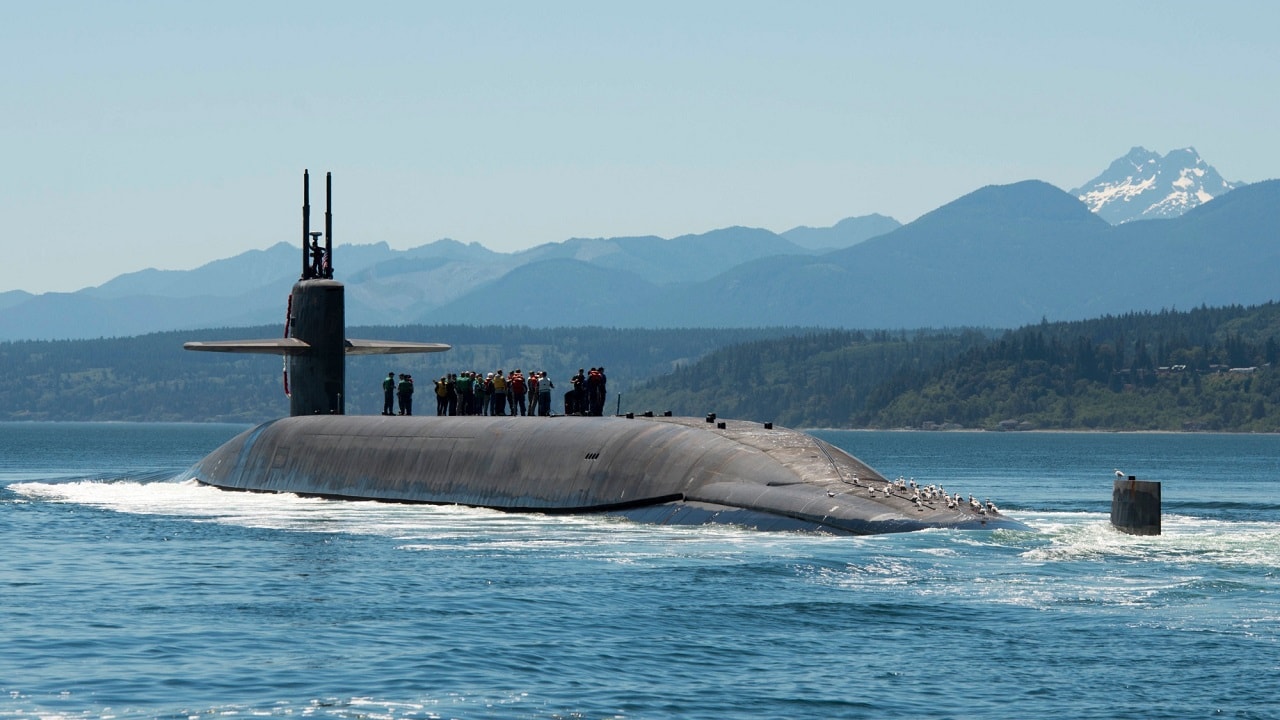The USS District of Columbia (SSBN 826), the first of the Columbia-class ballistic missile submarines, reached an important milestone this month. The sub emerged from a keel-laying ceremony at Quonset Point, Rhode Island, earlier in June. (Keel-laying is a significant step for vessels in which the initials of the boat’s sponsor are “welded onto a plate attached to the boat,” according to navy public affairs.) Ballistic missile subs, or “boomers,” are the most survivable leg of the nuclear triad, and they command up to 70% of the U.S. nuclear arsenal.
A Top Naval Priority
The District of Columbia (previously known as the Columbia) is part of a 12-vessel class that will eventually replace the 14 Ohio-class boomers set to retire in 2027. Adm. Daryl Caudle, commander of the U.S. Fleet Forces Command, pointed to all the personnel involved in the manufacturing of the District of Columbia in a speech at the ceremony.
“Laying the keel of the future USS District of Columbia truly is a historic occasion – not only for the countless designers, welders, metal workers, electricians, and master craftsmen whose unmatched expertise, ingenuity, hard work, and dedication will bring this modern marvel to life – but for the future sailors who will prowl the deep inside her hull, protecting our nation, deterring strategic attacks, and ensuring our freedom and way of life for decades to come,” Caudle said.
The Columbia class is the U.S. Navy’s number one acquisition priority. The service branch hopes the Columbia-class boomers will make their first official patrol after sea trials in 2031.
The Heritage Foundation’s 2022 Index of Military Strength recommends the Navy have 82 submarines in action by 2035, up from the 68 deployed as of 2021. The production of Columbia-class submarines is a major part of this calculus. Heritage points out in its report that China and Russia are coming close to the United States in the number of submarines their fleets hold.
The Columbia class will be the biggest and most complex submarine the United States has ever built. The boats are planned to be 560 feet long, with a beam of 43 feet and 21,000 tons of displacement. The Columbia class will have 16 ballistic missile tubes. These will be part of the Common Missile Compartment, a joint American-British project that will launch the Trident II D5 intercontinental ballistic missile. This three-stage solid-fueled ICBM has a maximum range of 7,400 miles.
Its nuclear reactor will last the life of the vessel – almost 40 years of service – with a shorter mid-life maintenance period. But making sure the District of Columbia enters service on time is vital to the program, since the Ohio-class boomers – namely the USS Henry M. Jackson – will start to retire in five years.
Columbia-Class: The Importance of Being on Time
The Navy is making detailed construction plans for the Columbia class since there is so little room for schedule slips. This means the Pentagon and Congress will work together to make sure everything is on time and on budget. Work stoppages during the Covid-19 pandemic were a concern, but full production has resumed.
Keeping up with China’s navy has been a mantra for many policymakers. Beijing just launched its third aircraft carrier, and the country’s busy shipyards are pumping out other warships. As a result, the Senate Armed Services Committee decided to fully fund the Columbia class in the FY23 National Defense Authorization Act. That is a step in the right direction.
There are many years of development and testing ahead for the USS District of Columbia, and it will be a challenge for all involved in the acquisition program to put the ingenuity of America’s naval industrial base on full display.
Now serving as 1945’s Defense and National Security Editor, Brent M. Eastwood, PhD, is the author of Humans, Machines, and Data: Future Trends in Warfare. He is an Emerging Threats expert and former U.S. Army Infantry officer. You can follow him on Twitter @BMEastwood.

